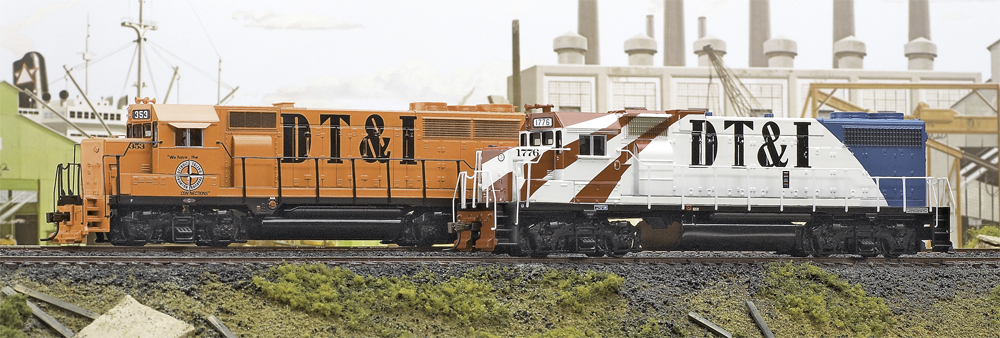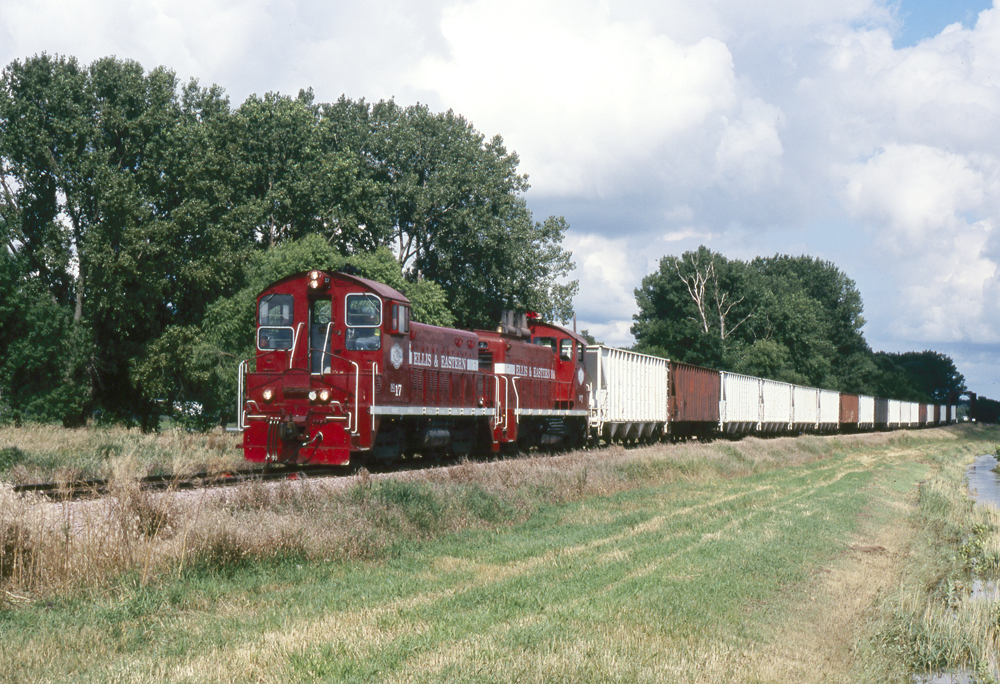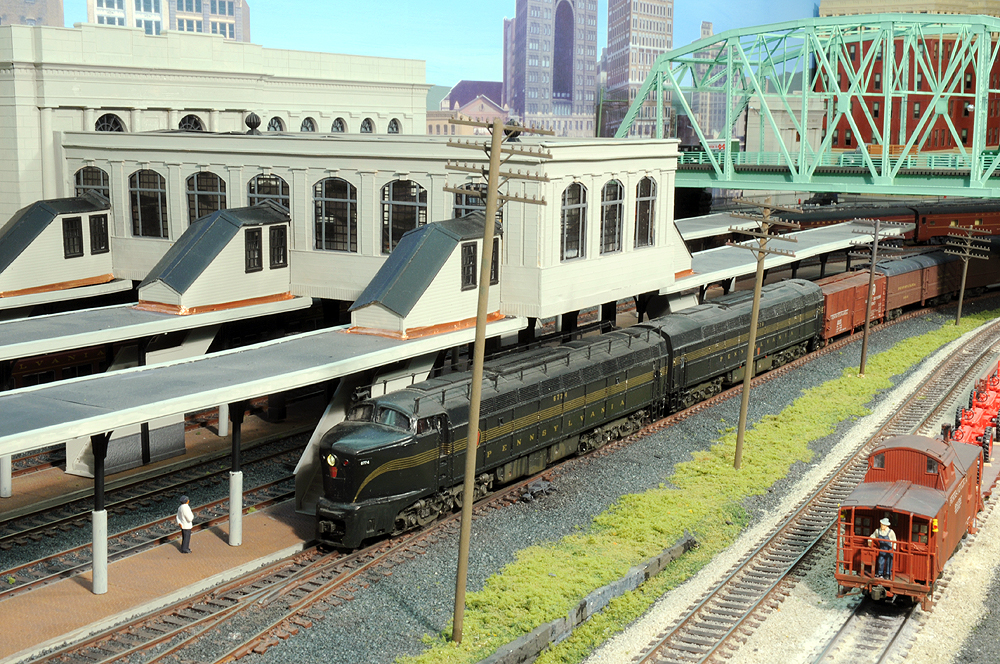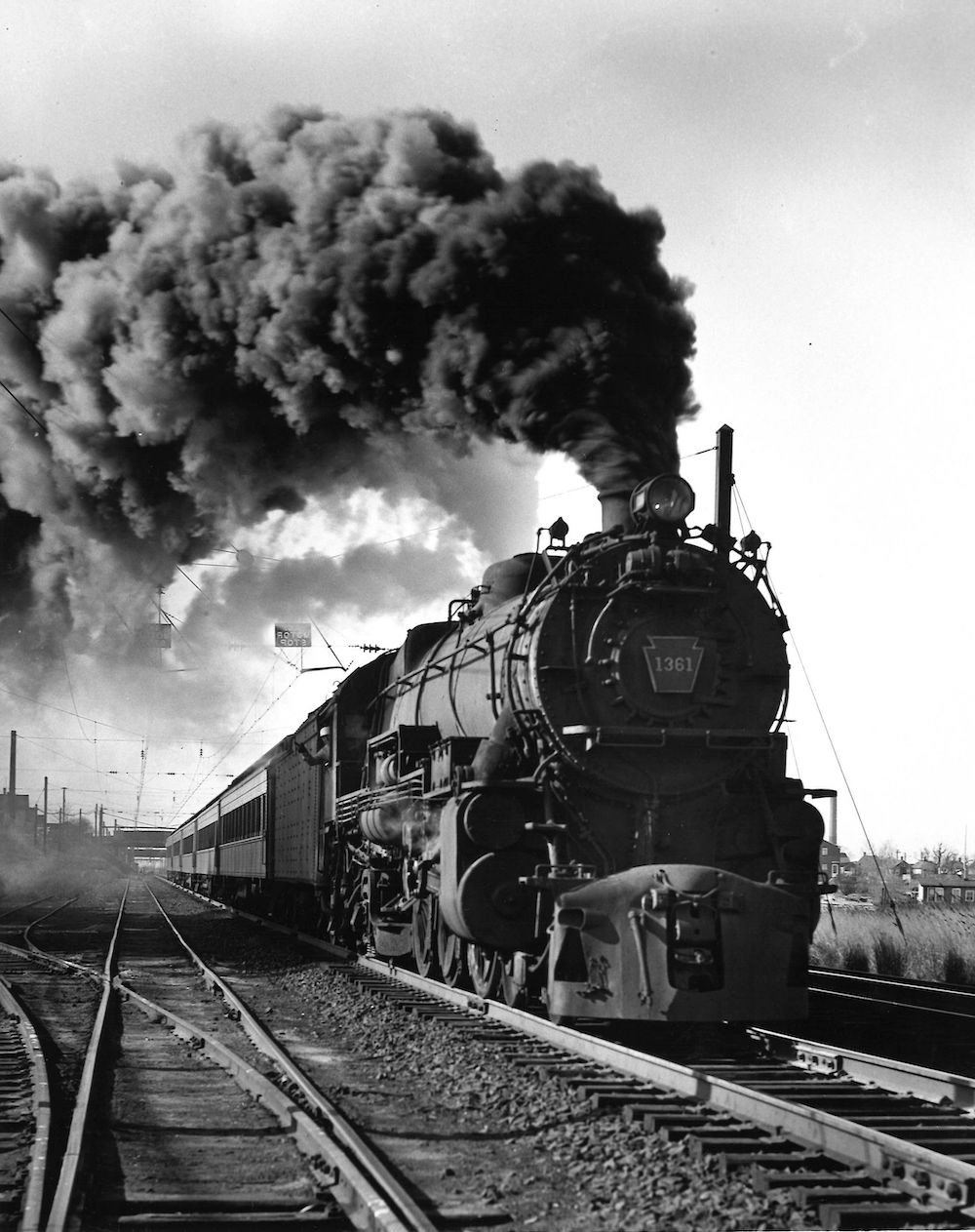For any beginner model railroading building their first or even second layout, one of the first questions usually asked is, “What railroad should I model?” It’s important not to bite off more than you can chew. First and foremost, you’ll want to consider product availability and resources. Do manufacturers offer rolling stock for the railroad you want to model? Are you able to easily find resources about that railroad and era so you can thoroughly research it?
Beyond that, modelers will need to consider the level of difficulty based on the railroad, era and location they want to model. Choose an era and location that be modeled using a basic train table setup that suits your space, simplistic track work for operation, and easy-to-replicate scenery, terrain and structures.
To get you started, our Model Railroader editors have provided their top picks for railroads, eras and locations suitable for beginner modelers.
Detroit, Toledo and Ironton Railroad

Running between its namesake cities in the early 1970s, the Detroit, Toledo and Ironton Railroad’s primary traffic driver was the automobile industry. With a single-track main line connecting Midwestern towns and industries along the way, the railroad had a pretty simple operation. And that makes it a perfect starting point for any beginner, according to Model Railroader Associate Editor Bryson Sleppy. An added benefit? Most of the materials you’ll need are readily available.
Sleppy suggests modeling the section of the railroad in the Northwest Ohio/Southeast Michigan region in the early 1970s. With its flat terrain full of farmlands, small industries and residential villages, the section is an easy one to model in HO scale, preferably on either an L-Girder or open-grid benchwork.
Walthers Cornerstone kits provide the foundation needed to kitbash most of the structures. As for available models, Sleppy confirms there’s never a shortage of DT&I equipment. Various manufacturers, including Tangent and ScaleTrains’ ExactRail, offer a variety of freight cars decorated for the railroad. Some of the locomotives – from EMD GP9 to SW7 diesels – have been produced by Walthers and Athearn with recent releases in the DT&I color scheme.
“While this was a time [in the early 1970s] where the railroad was struggling financially due to the bankruptcy of Penn Central, it was also a time where the road had its largest variety of locomotives,” Sleppy said.
Different resources are also available for the research needed, ranging from books by Morning Sun Books to a September 2005 article by Model Railroader that showcases Jim Hediger’s layout of the railroad from Detroit to Springfield, Ohio.
While some sections of the DT&I have been abandoned, most of the line today is still active with the Indiana & Ohio Railroad. For a front-row experience, Sleppy highly recommends a ride on the Ohio Rail Experience’s passenger excursions. “Spending time in the open-air car will give you an incredible sense of what you’re modeling,” he says.
Recommended Products:
- Athearn HO SD38, No. 250
- Athearn HO GP40-2, No. 407
- Tangent “Delivery 1970 Magenta” Greenville 86′ Double Plug Door Box Car
- Walthers Auto Assembly Plant Kit for Detroit’s Flat Rock assembly plant
- Walthers HO GP9, No. 981
- Walthers HO SW7, No. 923
Ellis & Eastern Railroad

For those looking to get into industrial switching in DC or DCC, Model Railroader Senior Editor Cody Grivno suggests South Dakota’s Ellis & Eastern RR, circa 2012. Still in operation today, the short line weaves its way through Sioux Falls, primarily hauling aggregate between the plants of its parent company, Sweetman Construction Co.
“Faithfully re-creating the railroad would require a lot of space,” Grivno explained. “To manage costs, I would selectively compress the [HO scale] route and pick industries that would provide the greatest variety of car types.”
The line runs through industrial and residential areas. Walthers Cornerstone, Rix Products Inc. and Pikestuff offer readily available kits that are close matches or reasonable stand-ins for the scenery found on the prototype, according to Grivno. Though prototype resources on the EE are limited, online videos and photos are beneficial if you want to re-create the railroad. For those looking to see it in person, there are public locations along the line that provide safe and easy access.
A fair warning from Grivno: It might be tricky to find prototypical equipment from the 2012 roster. While models of EMD SW900, SW1200, and Illinois Central Gulf Paducah-rebuilt GP10 diesels have been produced, none have been decorated for Ellis & Eastern. The railroad’s rolling stock fleet consisted of secondhand four-bay hoppers, former Duluth, Missabe & Iron Range ballast cars, and a company service flatcar. Grivno notes that Tangent Scale Models and Walthers have both manufactured quad hoppers.
“Some [locomotives and rolling stock] would require additional detail parts to more closely match the prototype,” he said. “As far as I know, Ellis & Eastern decals are not available in HO scale.”
Recommended Products:
- Pikestuff Modern 1- or 2-Stall Engine House Kit for the railroad’s engine house
- Walthers Modern Concrete Grocery Warehouse Kit for GCC Dacotah, Inc. cement plant
- Walthers Modern Lumber Transload Kit and Rix Multi-Purpose Building for Tamarack Materials Inc. lumberyard
- Walthers Rail-to-Road Aggregate Transfer Kit for Rail to Road transload facility
Pennsylvania Railroad

Model Railroader Editor Eric White and Senior Associate Editor Steven Otte both cut their teeth recreating the Pennsylvania Railroad. In their experiences, modeling the “Standard Railroad of the World,” with a wide range of eras (1846-1968) and locations (Between the U.S. Mid-Atlantic and Heartland) to choose from, is a no-brainer for beginners. However, modelers will need to pinpoint the appropriate “when” and “where” for their layout.
The celebrated PRR is well documented, with a plethora of resources available. Otte’s recommendations include “Rob’s Pennsy Home Page” on railfan.net and track charts from multimodalways.com. The Pennsylvania Railroad Technical & Historical Society is a great one-stop shop. You can also obtain an active membership to the historical society, something that White considers to be “part of the reason there are many PRR models available.”
Speaking of models, the prototypical locomotives, rolling stock, and structures are generally available through most major manufacturers. For those interested in the eras prior to the late 1960s, beginners should have no trouble building a classic diesel/electric fleet ranging from N to O scale. However, if one wishes to go as far back as the steam era, Otte cautions a trickier task due to limited product availability.
“The Pennsy built most of its own steam locomotives with a distinctive square Belpaire firebox used by few other railroads,” he explained. “This has generally made manufacturers [except for Broadway Limited Imports and Bowser Trains] reluctant to make models of PRR steamers because the tooling can’t be simply redecorated and sold as other road names.”
“The transition era, when diesels replaced steam, is one of the most popular [to model] due to the variety it offers, and this is PRR at its zenith,” White suggests for those still looking to add steam to their roster while combating the mentioned challenge.
As far as which location to model, White and Otte say it depends on the modeler’s own taste.
“If you like urban industrial switching, consider modeling the Pennsy in St. Louis or Chicago,” Otte suggests. “Indiana is a great place for granger railroading. For rail-marine operations, look to the railroad’s Hudson River piers and terminals. For passenger grandeur, model Pennsylvania Station in New York City. And of course, the railroad offers tons of coal-hauling action in the Appalachians.”
If preferences aren’t a factor, White’s suggests a 1950s branch line in the Midwest region as a great starting point. Beginner modelers wouldn’t have the pressure of modeling the Horseshoe Curve and could use a simple benchwork – perhaps a shelf layout with either DC or DCC operations. For beginners, White says it’s more important to make your modeling decisions based on the types of rolling stock that interest you rather than specific locations.
Recommended Products:
- Athearn HO F3A, No. 9531A
- Atlas N Silver H16-44, No. 8810
- Bachmann HO 4-6-2, No. 612
- Bachmann HO RS-3, No. 8605
- Bachmann N GG-1, No. 4912
- Broadway Limited Imports HO Class E6 4-4-2, No. 460
- Broadway Limited Imports HO BF-16 Sharknose A/B, Nos. 9708 & 9708B
- Browser HO U25B Phase III, No. 2647
- Rapido HO PA-1 & PB-1, Nos. 5752 & 5752B
- ScaleTrains HO SD45
- Walthers HO GP9 Phase II with High Hood, No. 7048
New York & Long Branch Railroad

From 1882 to 1976, the Pennsylvania Railroad partnered with the Central Railroad of New Jersey (Jersey Central) to jointly operate the New York & Long Branch. The line ran from Bayhead to South Amboy, N.J.
For beginners looking for a unique operation, Classic Trains Editor Brian Schmidt suggests a layout centered around South Amboy in the 1950s. This is where trains received an engine swap between steam/diesel and electric power. The railroad then heads south along the North Jersey Coast Line, part of today’s NJ Transit commuter system.
Gathering the necessary material for the research and world-building will mostly depend on finding said items. While quick-hitting resources on the PRR and CNJ are readily available, Schmidt recommends The Unique New York & Long Branch for an in-depth read of the former short line. Kevin Surman’s layout of the railroad was also featured in Model Railroader’s November 2013 issue.
As mentioned earlier, building the Pennsylvania Railroad’s roster, no matter the scale, shouldn’t be a problem — especially with the popular transition era taking place in the 1950s. For locomotives and rolling stock from the Jersey Central, signature Atlas products ranging from Fairbanks-Morse H15-44 and H24-66 diesels to 60-foot coaches are often available on the secondhand market, according to Schmidt.
Depending on how far you build out from the station and engine swap in South Amboy, the scenery will transition from suburban to rural with mostly a flat terrain to work with on the layout. However, the trackwork might put first-timers to the test.
“A faithful reproduction would likely be more complex than recommended for a beginner,” Schmidt explained. “However, the trackage could be distilled down to maintain realistic operations while being true to the spirit of the original.”
Recommended Products:













